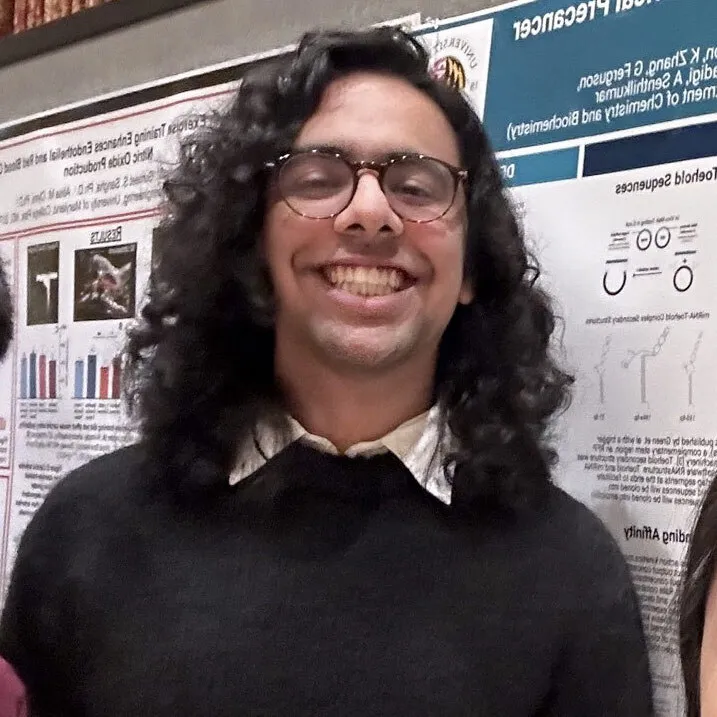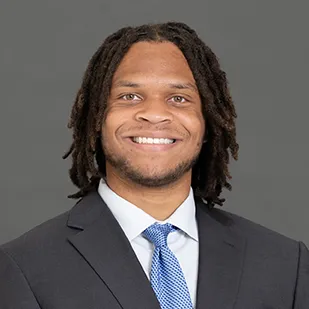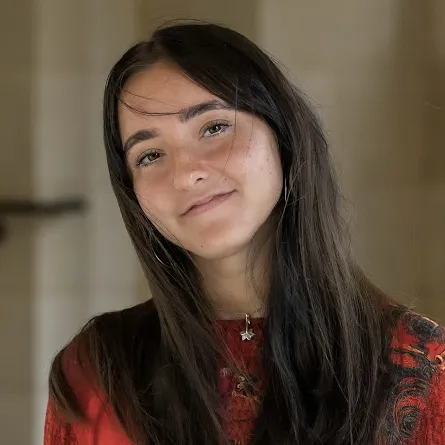- April 23, 2025
- By Sala Levin ’10 And Ruby Siefken ’26
Rivers that flow through the air, the differences between human and computer cognition and how neighborhoods affect substance abuse are some of the topics that will be on display Wednesday as students demonstrate their growing ability to formulate—and answer—deep questions with science and scholarship.
Roughly 500 students from disciplines across campus will present their work to peers, faculty and staff, and families and friends in the Stamp Student Union at Undergraduate Research Day. This showcase is a culmination of a valuable learning process that spans uncertainty, iteration, failure, problem-solving and unexpected outcomes, said Patrick Killion, director of the Office of Undergraduate Research.
“Undergraduate research has been shown to have really profound impacts on students personally and professionally,” said Killion, who also serves as director of the First-Year Innovation and Research Experience (FIRE). “Students grow in their confidence, in their self-efficacy, in their time management and communication skills, and in their resilience.”
Read on to meet some of the students involved.

Navya Bansal ’27
Bansal, in their second time sharing research at the event, is presenting two projects this year. The first is in collaboration with FIRE, where Bansal is a peer mentor. The team is developing biosensors—biological tools that can detect signs of a variety of diseases including endometriosis or Alzheimer’s in the body. It’s working on a new method called cell-free expression, which allows researchers to use biosensors outside of living cells.
Bansal’s second presentation is with International Genetically Engineered Machines, or iGem, a competitive research organization on campus. The team’s big idea is to genetically engineer E. coli so that they produce components of different substances, like medicine or plastics, when exposed to different colors of light.
Anyone can get involved in undergraduate research at UMD as long as they’re willing to work and want to make a positive impact on the world, they said.
“You really don’t have to come in with any prior knowledge in the field,” Bansal said. “I didn’t know anything about biosensors or anything about cervical cancer when I started in FIRE or iGem, respectively.”

Jonathan Booker ’25
Booker is presenting his honors thesis for the psychology department exploring the interactions of substance exposure and neighborhood environments on brain development for adolescents living in urban areas.
He wants to understand the problems these teens face and find ways to help them succeed. In this project Booker found that there wasn’t a strong link between neighborhood environment, substance exposure and brain development.
As a nontraditional student who transferred to UMD from community college and has experiences with the foster care system, Booker found his life experiences helped broaden his perspective as he carried out his project and prepared to present his findings.

Atrey Desai ’27
A computer science and linguistics double major, Desai combined his fields of study in his research project, which came out of his work in computer science Assistant Professor Rachel Rudinger’s Computational Linguistics and Information Processing Lab. Desai identified shortcuts artificial intelligence might use to determine the correct answer to multiple choice questions. (One simple shortcut AI favors? The longest answer is probably the correct one.)
“I discovered that machines and artificial intelligence do not think in the same manner that humans do,” said Desai. “When a human is solving a math problem, we might think about another similar problem we’ve encountered and do a step-by-step process. AI is great at finding random clues that humans can’t really tell.”

Miah Duncan ’27
Aretha Franklin, Nina Simone, Grace Jones and Donna Summer all played a role in Duncan’s project on how musical artists—especially Black women—who performed on the UMD campus influenced the thinking of students of the time. The journalism major found that a contemporaneous Diamondback column condemned the objectification of women in music, and that other students launched a radio broadcast called “Black Women: Catalyst for Change.”
“As a journalist, you’ll always do research, so this definitely prepared me for having to go through the hurdles of finding research,” said Duncan. “I genuinely enjoy doing it now.”

Leah Freisinger ’27
Working in psychology Associate Professor Tracy Riggins’ Neurocognitive Development Lab, Freisinger has had the chance to study brain development in young children and its connection to memory retention. In her project, she and her team showed children ages 3–5 a picture (something like a rabbit or a hamburger), followed by a range of other pictures, some similar and some entirely different. They found that kids who had a thicker cortex—the outer layer of the brain—in certain areas could better identify the original picture than those with a thinner cortex.
“I found that I really have a passion for research, and I feel really lucky that Maryland’s been able to offer these opportunities,” said Freisinger, a psychology major who eventually hopes to earn a Ph.D. “The practice of taking data and turning it into actual knowledge is so fascinating and really exciting.”

Sofia Tellez-Fenner ’26
Atmospheric rivers, long bands of water vapor in the atmosphere that transport moisture and heat, are the focus of Tellez-Fenner’s research. The atmospheric science major’s project examined how atmospheric rivers have affected the Arctic climate and gauged the accuracy of the current modeling system in representing these “rivers in the sky,” she said.
Participating in research has highlighted for Tellez-Fenner what her own strengths are. “I know I’m good at working behind the scenes and delegating tasks to people without being the typical, extroverted person up front,” she said.
Undergraduate Research Day will take place in the Grand Ballroom of the Adele H. Stamp Student Union from 2 to 4 p.m. Wednesday.
All through April, Maryland Today will celebrate how the University of Maryland is reimagining learning and teaching. Find more stories at today.umd.edu/topic/we-reimagine-learning.
Topics
Research